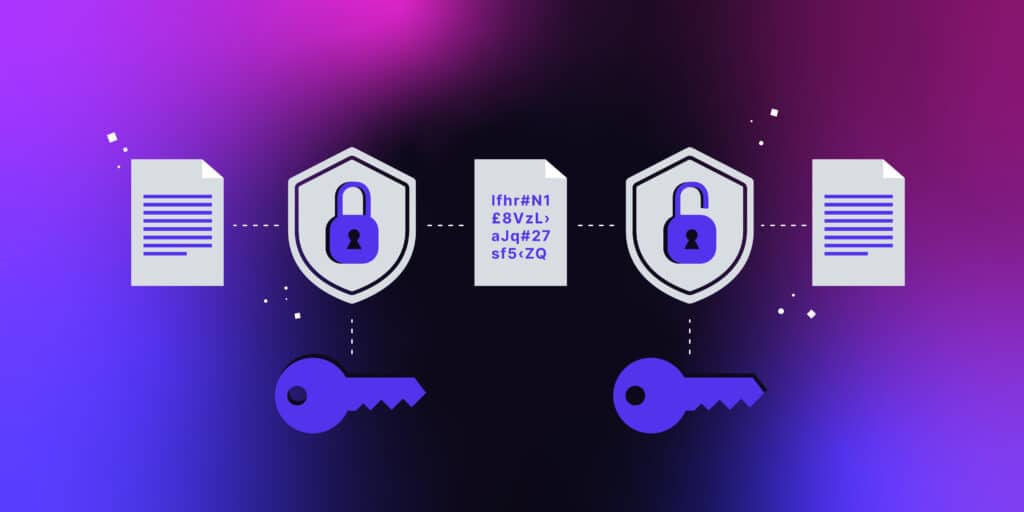Securing data storage in mobile apps is crucial to protect sensitive information from unauthorized access and ensure the privacy of users. Mobile operating systems provide various mechanisms and APIs that developers can leverage to implement robust data protection strategies. In this article, we will explore different approaches for securing data storage in mobile apps. We will discuss secure data storage options provided by mobile operating systems, such as Keychain on iOS and Android Keystore, as well as encryption techniques like symmetric and asymmetric encryption to protect sensitive data at rest.
Secure Data Storage Options

Mobile operating systems provide built-in features and APIs to securely store sensitive data within mobile apps. These options offer a convenient and standardized way to protect data from unauthorized access and ensure its confidentiality. Here are some commonly used secure data storage options:
- Keychain (iOS): On iOS, the Keychain is a secure storage mechanism provided by the operating system to store sensitive data such as passwords, cryptographic keys, or authentication tokens. The Keychain uses encryption to protect data at rest and offers features like data isolation per app and access control based on user authentication. Developers can leverage the Keychain API to securely store and retrieve sensitive data, reducing the risk of unauthorized access or data leakage.
- Android Keystore (Android): Android provides the Keystore system, which offers a secure storage environment for cryptographic keys, certificates, and other sensitive data. The Android Keystore protects data using hardware-backed security modules (if available) or software-based encryption. Developers can use the Android Keystore API to generate and manage cryptographic keys securely and perform cryptographic operations within the protected environment.
- File System Encryption: Both iOS and Android offer file system encryption capabilities to protect data stored in files. The operating system automatically encrypts the file system on the device, ensuring that data is encrypted at rest. Developers can take advantage of this built-in encryption mechanism by storing sensitive data in files and relying on the underlying file system encryption provided by the operating system.
- Secure Enclave (iOS) and Secure Element (Android): iOS devices include a hardware-based secure enclave, while some Android devices have a dedicated secure element. These components provide a secure execution environment separate from the main processor and memory, offering enhanced protection for sensitive operations and data. Developers can leverage the capabilities of the secure enclave or secure element to store and process sensitive data, such as cryptographic keys or biometric templates, with an added layer of security.
Encryption Techniques

In addition to secure data storage options provided by mobile operating systems, developers can implement encryption techniques to protect sensitive data stored in mobile apps. Encryption ensures that even if an unauthorized party gains access to the data, they cannot decipher it without the encryption key. Here are two commonly used encryption techniques for securing mobile app storage:
- Symmetric Encryption: Symmetric encryption uses a single secret key to both encrypt and decrypt data. The same key is used to encrypt the data when it is stored and decrypt it when it needs to be accessed. The key must be kept secret and securely managed by the app. Symmetric encryption algorithms, such as AES (Advanced Encryption Standard), are widely used in mobile app development due to their efficiency and security. Developers can encrypt sensitive data using symmetric encryption algorithms before storing it in databases, files, or other storage mediums within the app.
- Asymmetric Encryption: Asymmetric encryption, also known as public-key encryption, involves the use of a pair of keys: a public key and a corresponding private key. The public key is used to encrypt data, while the private key is used to decrypt it. In the context of securing mobile app storage, asymmetric encryption can be utilized to protect sensitive data. For example, an app can encrypt data using the public key of the recipient, and only the recipient, who possesses the corresponding private key, can decrypt and access the data. This technique is particularly useful when data needs to be securely shared between different entities in a mobile app environment.
Best Practices for Data Protection

To implement effective data protection strategies in mobile apps, developers should follow best practices that enhance the security of sensitive data stored on the device. Here are some recommended practices to consider:
- Sensitive Data Minimization: Only store essential data that is required for the app’s functionality. Minimizing the amount of sensitive data stored helps reduce the potential impact of a data breach or unauthorized access.
- Use Strong Encryption Algorithms: When implementing encryption for data storage, use strong and widely accepted encryption algorithms, such as AES with a 256-bit key. Avoid using weak or outdated encryption algorithms that are susceptible to attacks.
- Secure Key Management: Implement robust key management practices to protect encryption keys. Keys should be stored securely, such as in the Keychain or Android Keystore, and access to the keys should be limited to authorized components or users.
- Secure Communication Channels: Ensure that communication channels between the mobile app and any backend services or APIs are encrypted using protocols likeTLS (Transport Layer Security) or HTTPS (HTTP Secure). This protects data in transit, preventing eavesdropping and tampering.
- Secure User Authentication: Implement strong user authentication mechanisms, such as password-based authentication, biometric authentication (e.g., fingerprint or face recognition), or multi-factor authentication. Strong authentication ensures that only authorized users can access sensitive data within the app.
- Data Segregation and Isolation: Isolate sensitive data from other app data and ensure it is stored in a separate, protected storage space. This prevents unauthorized access to sensitive data through unintended data leakage or app vulnerabilities.
- Regularly Update and Patch: Keep the mobile app updated with the latest security patches and fixes provided by the mobile operating system and third-party libraries. Regularly update the app to address any known security vulnerabilities.
- Secure Offline Data: If the app requires offline data storage, ensure that the data is appropriately encrypted and protected. Consider using techniques like file system encryption or encrypting individual files to maintain the confidentiality of offline data.
Conclusion
Securing data storage in mobile apps is of paramount importance to protect sensitive information and maintain user privacy. Mobile operating systems provide secure data storage options like Keychain and Android Keystore, while encryption techniques like symmetric and asymmetric encryption can be implemented to safeguard data at rest. By following best practices such as sensitive data minimization, strong encryption, secure key management, and secure communication channels, developers can enhance the security posture of their mobile apps and protect sensitive data from unauthorized access. Implementing these data protection strategies is crucial in today’s mobile app landscape, where users entrust their personal information to apps and expect robust security measures to be in place.

